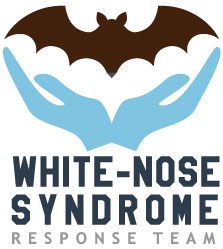
White-nose syndrome (WNS) is a fatal disease of hibernating bats caused by the fungus Pseudogymnoascus destructans (Pd for short). The fungus infects bats while they are hibernating over winter. Researchers first discovered the disease in New York in the winter of 2006. Since then, it has spread across much of the United States and Canada, killing millions of bats—up to 99% of some bat colonies. The National Park Service works with many other state and federal agencies, tribes, universities, and conservation organizations who are part of the White-nose Syndrome Response Team to learn more about the fatal disease and how to reduce impacts to bats.
Learn more about White-nose syndrome in the following articles or discover more by watching videos on white-nose syndrome and bat research.
Last updated: November 1, 2024
